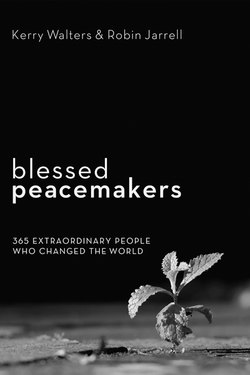Читать книгу Blessed Peacemakers - Robin Jarrell - Страница 37
На сайте Литреса книга снята с продажи.
2 February Maximilian Vanka
Оглавление11 October 1889—2 February 1963
Muralist for Peace
In 1937, Millvale, Pennsylvania, was a poor town on the north bank of the Allegheny River. A sizable percentage of the residents, many of them immigrants from eastern Europe, worked across the river in the Pittsburgh steel mills. They worshipped at St. Nicholas Croatian Catholic Church, a twin-towered Romanesque structure built on one of Millvale’s hills and shepherded by Franciscan Father Albert Zagar.
Throughout eight weeks in the spring of 1937, worshippers at early morning mass observed a thin man with a goatee industriously working on a series of dry fresco murals on the interior walls of St. Nicholas. The artist, Maximilian Vanka, had been commissioned by Father Zagar to decorate the sanctuary with religiously themed paintings. Vanka worked from early morning to late night on the project, Father Zagar frequently praying at the altar while Zagar painted.
Vanka’s eleven murals included stunning depictions of the four gospelists, St. Francis receiving the stigmata, the creation, and the crucifixion. Overall, the mood was celebratory. But when Vanka returned to St. Nicholas four years later to complete a second cycle of murals, the paintings took on a much more somber tone and message. War had been raging in Europe for months, and Vanka’s anguish over the killing and destruction there was reflected in his work. The new murals included breathtaking images of a crucified Christ stabbed by a bayonet-wielding soldier, the Holy Mother throwing herself between opposing armies, and the burial of a lad killed in battle. The new murals also reflected Vanka’s outraged realization that war was good business for unscrupulous profiteers. Two of his panels offer a grim contrast between an impoverished working family and a wealthy capitalist. Together, this second cycle of murals is one of the most haunting indictments of war-making ever created by an artist.
Maximilian Vanka had firsthand acquaintance with poverty and war. Born in Zagreb, he was a fachook, or noble bastard, sired by a member of the Habsburg nobility. Abandoned while still an infant, he was raised by peasants until he was eight, when his maternal grandfather learned of his existence and took him in. Vanka displayed a talent for drawing from an early age, and his grandfather encouraged him to study art in Zagreb and Brussels. When World War I erupted, Vanka, a firm pacifist, served with the Belgian Red Cross and witnessed horrors that later found expression in his St. Nicholas murals.
After the war he lived for a few years in Paris and exhibited throughout Europe. He married an American woman and in 1934 immigrated with her to the United States. They settled in Pennsylvania, where Vanka taught art at a number of colleges while continuing his work as a freelance artist. Today he’s recognized as one of this nation’s finest immigrant artists. But none of his work is more gripping than the St. Nicholas murals.
